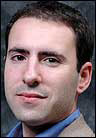Royal Philips Electronics‘ medical-systems division has introduced a new asset-tracking solution leveraging RFID and standard Wi-Fi-based wireless networks. This new division will help hospitals not only track medical devices, but also monitor how staff members handle such devices.
Built on a suite of software Philips designed to help health-care institutions manage their staff, patient care, assets and operations, the system has been integrated with real-time location system (RTLS) hardware and software from San Mateo, Calif.-based RTLS specialist AeroScout. The RTLS system includes AeroScout T2 active RFID tags; AeroScout Exciters, which activate the tags to transmit their ID numbers, thus providing location information whenever tags pass by their locations; and AeroScout Engine, a software component that calculates tag locations by processing data from Wi-Fi access points and the active tags. AeroScout’s MobileView software associates each tag’s ID with the corresponding device, while also collecting and storing location data. The MobileView software can also portray location information on a map, or in a table or report format.
Hospitals can apply T2 tags to a variety of medical equipment—such as ultrasound machines, electrocardiogram (EKG) machines or compression pumps used to treat thrombosis and improve circulation. Each tag transmits a 2.4 GHz signal carrying the tag’s unique ID. The transmission uses the IEEE 802.11 air-interface protocol, known as Wi-Fi, so organizations with existing networks of Wi-Fi access points need not install proprietary interrogators to collect tag data.
More and more hospitals are installing Wi-Fi networks. According to Barb Taylor, a marketing manager with Philips medical-systems division, the combination of Philips’ medical management software and AeroScout’s Wi-Fi-based RTLS system provides hospitals an asset-tracking solution that’s less expensive and easier to install. “That helps to make the return on investment more obtainable, more quickly,” she says.
Philips will help deploy the asset-tracking system, tailoring it to each hospital’s specific needs to help the organization solve problems with productivity, regulatory requirements, utilization, theft and loss. “What Philips brings to the table is the health-care expertise and an in-depth knowledge of a hospital environment,” Taylor says. “And we can add to the mix our suite of services and software that will enable hospitals to make improvements based on the information they are gathering from location data and location history.”
For example, one hospital Philips has been working with to install the asset-tracking solution has had a recurring problem with its compression pumps becoming damaged, forcing the the hospital to send the devices to its bio-medical engineering shop for repairs. “These are very expensive repairs,” Taylor admits, “so the staff at the hospital has been using the asset-tracking system to determine where the compression pumps were prior to coming in for repairs.”
“What they are hoping to find is some trends that they can then address,” says Taylor. “What they think is that the compression pumps are getting placed under patient beds, and when those beds are lowered, the pumps are getting crushed. If the data bears that out, then the hospital plans to do some extensive training to teach the staff how to take better cares of them.”
The University Medical Center (UMC) in Tucson, Ariz., has already installed the Philips-AeroScout asset-tracking solution. The deployment covers the entire hospital—comprised of eight floors and covering a million square feet—and involves 2,300-tagged assets, such as infusion pumps, beds, monitors and wheelchairs.
Other U.S. hospitals are also using some type of Wi-Fi-based asset-tracking system. AeroScout worked with Hatboro, Pa., wireless systems-integration specialist InfoLogix to deploy a Wi-Fi RTLS for Reading Hospital in Reading, Pa., to track and better utilize its infusion pumps (see RFID Sees Gains in Health Care). And Denver Health’s Women and Children’s Pavilion is using a Wi-Fi RTLS designed by PanGo Networks (see RFID Sees Gains in Health Care).
“What we’ve seen in the health-care industry is, unlike certain other industries where RFID has taken hold, asset tracking provides a very clear and attainable ROI,” says Joshua Slobin, AeroScout’s director of marketing. “I think the reason why that ROI is clear is because the problems of asset management and asset tracking within a chaotic environment like a hospital have been recognized and have been difficult to solve for quite some time. So having technology to solve these problems, and being able to do it on Wi-Fi, is really valuable.”


